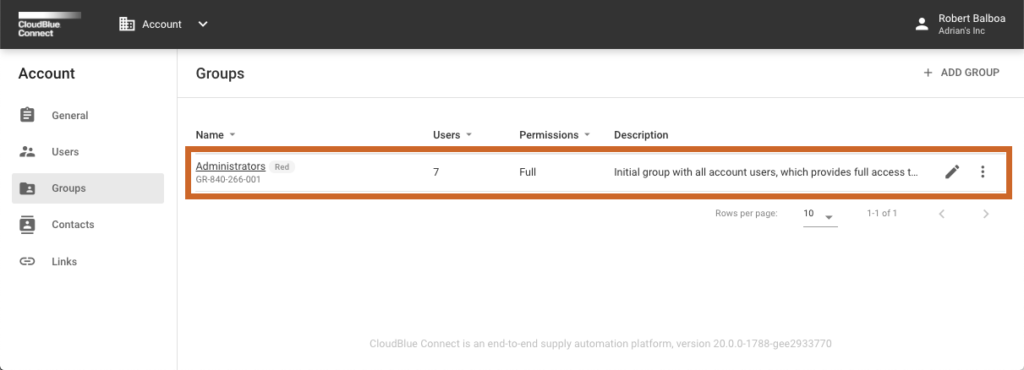Release Date: July 9, 2020
This release brings to you an improved performance, better stability, smoother workflows, and enriched user experience.
A new and improved dashboard for Connect has arrived.
Users can now instantly access required actions, such as pending contracts or pending asset requests in the Required Actions section of the dashboard. Search bar allow to quickly navigate around modules and actions by keyboard alone – click Enter to quickly jump to the selected element.
It is now possible for both Vendors and Providers to add custom links to be shown in the Home Dashboard:
Providers can add quick links to their own and dependent Vendor (through the program contract) or Provider (through the service contract) accounts. Vendor can add quick links only to their own accounts.
With the introduction of the new Price Management Module, Vendors can now manage versions of prices for their products per Item (SKU), per Provider and Marketplace. Vendors can set up prices at Provider’s cost, at Tier-0 suggested price (MSRP) as well as any other tier and by any number of custom attributes.
Pricing rules need to be defined according to the vendor’s distribution contract. Price lists are integrated into the overall Listing flow allowing providers to take advantage of the existing processes built around listing review and approvals.
Please note that while Price Management brings a lot of value to our partners, its use is completely optional and the decision of whether to use Price Management of the CloudBlue Connect or not is made by individual Providers as they build or evolve their Vendor management programs.
Vendors can now implement additional parameter types:
Providers and vendors can segment users within an account to different groups and assign permission for specific users to access defined modules within the Accounts module.
Each user is now required to be a part of at least one group. Please note that by default the “Administrators” group with all account users is created for all accounts in the system.

Users can customize groups and users membership as they need.
A new module features a directory that lists the partners you work with (through Program or Service contracts) one place, along with their business or technical contact information.
Please note that technical and business contacts are defined by each organization individually within their Account preferences (see next paragraph).
Each Account defines the list of Technical and Business contacts within their Account preferences:
At least one technical and one business contact is required to be defined for each account in Connect.
In addition to Preview Assets, Connect now allows Providers to create Test and Production Assets (Subscriptions) directly within the Provider Portal using “Environment” step of the corresponding wizard:

Previously, Production and Test Assets creation was only possible through APIs, SDKs, or Extensions.
Please note that the Preview type of assets is now only available to Vendors.

This is required to allow vendors to test their scenarios isolated from Provider flows.
Connect now has webhooks support for more system objects:
Thus enabling developers to take advantage of real-time updates related to these objects without need for extensive polling.
Vendors can now define the changes that were made in different product versions when submitting it to Providers. This allows both the Vendors and Providers to know exactly what was changed between different product versions.
Versions can now also be marked as Private, when required, to prevent Providers from seeing them in the Provider portal.
Usage Reporting now fully supports syndicated-products. Vendors will now be able to upload usage reports for syndicated products based on our existing usage reporting schemas to both the syndicating provider and the direct provider.
In addition, Providers can now define custom columns for the Vendors and/or Providers to populate, based on business rules of the usage reporting.
Lastly, items in the asset details of the Usage Report are now split according to reservation based-items and usage-based items for more optimized usage reporting.
Provider branding has been extended to support Marketplace-level customizations, including the ability to customize the Inquiring Email template and Activation portal contents.
We’ve included lots of updates to our OpenAPI specification – you will see more methods, more detailed attributes and more descriptions.
OpenAPI specification is the standard, language-agnostic interface that can be used to secure and accelerate the API lifecycle; more specifically, the creation of machine-readable interface files used to describe, produce, and consume RESTful web services.
A newly redesigned and optimized CloudBlue Catalog is now live! Its new layout is optimized to help to find the exact products quickly and efficiently:
Please see CB Commerce Extension Release Notes for detailed information about CloudBlue Commerce Extension v20 release details.